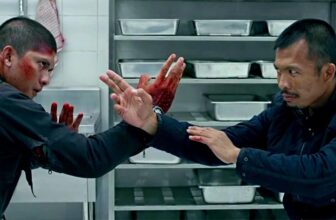
Embarking on a journey into the world of martial arts is not just a physical endeavor; it’s a transformative experience that encompasses discipline, self-discovery, and a path to personal growth. If you find yourself intrigued by the prospect of joining the ranks of martial artists but are unsure where to begin, fear not.
This guide will navigate you through the essential steps of getting started in martial arts, covering everything from understanding different styles to finding the right school, selecting the appropriate gear, and embracing the values of respect and perseverance inherent in the martial arts community.
So, tighten your belts and prepare to dive into a realm where strength meets wisdom, and the journey is as enriching as the destination. Welcome to the exhilarating world of martial arts.
Understanding the Different Martial Arts Styles
Understanding a wide range of martial arts styles is necessary to comprehend the diverse fabric of martial arts, as each is unique in terms of its methods, ideologies, and cultural roots. Martial arts are a broad field that provides several avenues for mental toughness, physical fitness, and self-defense. This is a succinct overview of several martial arts forms, along with important keywords:
1. Karate
- Focus: Strikes, kicks, blocks
- Philosophy: Discipline, self-control
2. Taekwondo
- Focus: High kicks, jumping/spinning kicks
- Philosophy: Courtesy, integrity, perseverance
3. Judo
- Focus: Throws, ground fighting
- Philosophy: Maximum efficiency, minimum effort
4. Brazilian Jiu-Jitsu (BJJ)
- Focus: Ground fighting, submissions
- Philosophy: Leverage, technique over strength
5. Kung Fu
- Focus: Strikes, kicks, throws, joint locks
- Philosophy: Harmony, balance, fluid movement
6. Muay Thai
- Focus: Punches, kicks, elbows, knee strikes
- Philosophy: Aggressive offense, strong defense
Choosing the Right Style for You
Choosing the right martial arts style is an important and personal choice that is based on several factors, including personal preferences, goals, and physical abilities. Every martial arts style has its distinct traits, methods, and philosophies. Whether your goals are for self-defense, fitness, competitiveness, or personal growth, it’s important to think about them.
Finding the Right Martial Arts School
Finding the right martial arts school for you will have a significant impact on the quality of your training and overall experience. Here is a quick guide to assist you in making this important choice:
1. Researching Local Martial Arts Schools
Investigate your choices locally first. To determine the standing of several local schools, consult internet evaluations, testimonies, and referrals from friends and relatives.
2. Visiting Schools in Person
Primary experience is incomparable. Experience the school’s culture, student-teacher relationships, and technique by attending introductory classes or by watching regular sessions.
3. Questions to Ask Instructors
Make sure it’s the appropriate fit for you by asking important questions when you visit or get in touch with possible schools. Find out about the instructor’s qualifications, background, teaching philosophy, and safety protocols.
Essential Gear and Attire
A crucial part of your martial arts journey is preparing yourself with the necessary equipment and clothing to ensure both safety and peak training performance. Here is a quick rundown of the essential elements:
Basics of Martial Arts Gear
1. Uniforms (Gi)
Gis, or martial arts outfits, differ depending on the style. Usually, they consist of a belt, pants, and jacket. Throughout the martial arts community, the uniform stands for harmony and discipline.
2. Protective Gear
Protective gear can include shin guards, headgear, mouthguards, and gloves, depending on the type. These tools protect practitioners in high-intensity training sessions and sparring.
3. Training Equipment
Skills are developed more effectively with the use of various training aids such as grappling dummies, focus mitts, and punching bags. A comprehensive training experience is enhanced by knowing and applying these resources.
Tips for Buying Quality Martial Arts Gear
1. Sizing and Fit
Check that the protective gear and uniform fit properly. For optimal comfort and unrestricted movement during training, wear an outfit that fits well.
2. Durability and Material
Invest in high-quality equipment composed of robust materials. This guarantees durability, can handle intense workouts, and offers trustworthy protection.
Developing a Consistent Training Routine
Developing a consistent training routine is essential to become proficient in martial arts and learning all of the different techniques. To guarantee efficient advancement and skill development, this method entails several essential components.
- Frequency: To enhance skills and develop muscle memory, engage in regular exercise.
- Structured Sessions: Schedule warm-ups, drills, sparring, and cool-downs for each session.
- Goal Setting: Establish attainable objectives for both the overall progress and each session.
- Diversify Techniques: Make your way through different martial arts styles and techniques.
- Cross-Training: Incorporate complementing exercises to improve your strength and general fitness.
Building a Support System
In martial arts, developing a support system involves cultivating positive relationships within the community, involving the help of friends and family, and asking seasoned mentors for advice. This network improves your martial arts training experience and gives you the motivation you need to overcome obstacles and reach your objectives.
Overcoming Challenges
Overcoming challenges is a dynamic process in martial arts that calls for a well-balanced mix of self-reflection, optimism, adaptability, patience, and steady work. By accepting obstacles as opportunities for growth, you can develop not just your martial arts abilities but also your resilience off the training mat, which will benefit your entire life.
Conclusion
In conclusion, deciding to take up martial arts is a powerful one that extends beyond actual instruction. By learning about various martial arts techniques, picking the best school, getting the necessary equipment, and creating a regular training schedule, you build the groundwork for self-improvement and self-control.
Creating a network of support within the martial arts community, establishing a relationship with training partners, including friends and family, and looking for mentorship all add to a rewarding and comprehensive experience. A life-changing journey toward physical fitness, mental resilience, and a profound sense of accomplishment awaits you on your martial arts adventure as you overcome obstacles, establish reasonable goals, and embrace the ideals of respect and perseverance.






